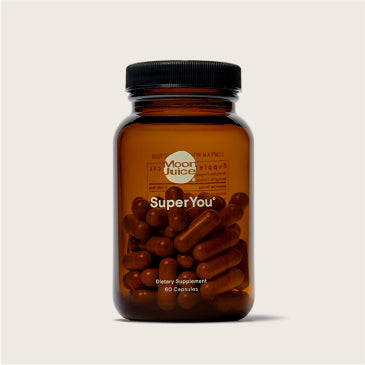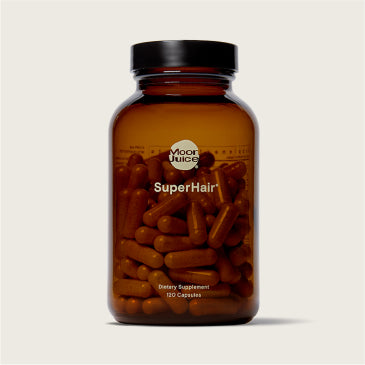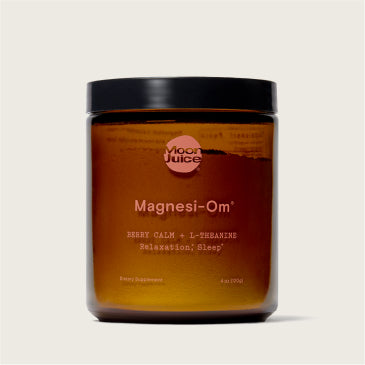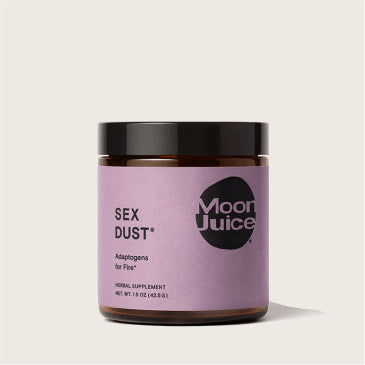Cleanse, tone, and moisturize. Most steps in a skin care routine have a stated purpose, but serums are less straightforward, with the intended effect varying from product to product. With so many different types of serums out there, the choices can be overwhelming, so let’s break it down. Though serums don’t serve one common purpose, they’re still a decidedly important step for getting active key ingredients into your skin.
Here’s your guide to navigating different skin care serums and their uses.
What Is a Face Serum?
A skin care serum is a lightweight product that delivers high concentrations of active ingredients to your skin.
Unlike a moisturizing lotion or cream, which might offer the same actives in lower concentrations, a facial serum’s purpose is to usher targeted components to your face.
Many people confuse serums with oils — oils are used to seal in products as the last step of a routine, while serums are meant to be used on fresh, clean skin.
Essentially, serums get active ingredients into your skin and penetrate quickly, deeply, and effectively.
6 Types of Face Serums
Because a serum refers to the concentration of a product rather than the skin concern that it targets, each facial serum will produce a different effect depending on the active ingredients used. What is an active ingredient? It’s the substance that’s intended to treat a specific concern, as opposed to the other ingredients that might be added as emulsifiers, emollients, preservatives, carrier oils, or scents, for instance.
Here are 6 common serums you’ll find:
1. Hydrating serums
Parched skin can appear dull, flaky, or rough, and dryness tends to emphasize the appearance of fine lines and wrinkles. When there’s an imbalance of moisture in our skin, or when our skin is stripped of its natural oils, this can damage our moisture barrier and lead to an overproduction of acne-causing sebum.
Both internal and external stressors can compromise this skin barrier and biome, leaving skin dehydrated and prone to breakouts and irritation. If you are looking for a way on how to hydrate your skin, try out a serum. A hydrating serum is one that uses targeted ingredients like Hyaluronic Acid to help draw moisture back into your skin cells and prevent transepidermal water loss, or TEWL, the measurement of how much water evaporates from your skin.
Hyaluronic Acid, which has many benefits, is a naturally occurring type of polysaccharide or sugar that’s found in our connective tissues. Famously, HA is prized for its ability to hold 1,000 times its weight in water. As a humectant, it holds water molecules onto the surface of your skin. Because its humectant powers allow it to attract moisture in from its surroundings, it needs to be used with a splash of H20 or face mist.
Lots of products contain this hydrating superstar, but you really need a low molecular weight Hyaluronic Acid within a specific range to deliver benefits without inflaming your skin. A smaller molecule size allows HA to penetrate into your skin to deliver benefits, and between 50kd and 500kd is best. A recent study found that a topical, low molecular nano-hyaluronic acid under 500kd resulted in more increase of moisture, changes to the depth of wrinkles, increased elasticity around the eye, and better skin absorption compared to a larger molecule Hyaluronic Acid.
Plump Jelly® is a hydrating serum that quenches skin in two ways and may help promote plump skin. First, low molecular weight Hyaluronic Acid and PGA Peptides work synergistically to hydrate around the cells. Meanwhile, Beet Amino Acid and Silver Ear Mushroom help deliver water into the skin cells and lock it in for long-term moisture. Adaptogenic Reishi has many benefits such as helping protect skin barrier function, and Tocos (Vitamin E) acts as a buffer against oxidative stress to help preserve your skin’s elasticity.
When used together, Hyaluronic Acid and Silver Ear Mushroom act as hydrophilic buddies. A Hyaluronic with a low molecular weight of 50kd is able to penetrate beneath the skin’s surface — used on a clean, damp face, your skin will drink it in. Silver Ear Mushroom works immediately by forming a flexible hydrating film on the skin for visible results. Though it’s targeted for hydration, Plump Jelly® will also provide a cooling, soothing effect from the adaptogenic Reishi mushroom.
2. Brightening serums
Skin brightening serums might address a number of skin concerns, from dullness to discoloration. Lifestyle factors like a lack of vital nutrients in your diet or too much time spent indoors can compromise your health in a way that causes your skin to appear dull. It’s important to make sure you’re addressing the root causes of these issues — by eating a whole foods diet, filling in gaps with a vegan multivitamin, and getting Vitamin D from the sun in careful doses, for instance. But in addition to these measures, a targeted serum with brightening actives can help smooth the surface of your skin so that it appears more vibrant and glowing. It can also help even skin tone by addressing hyperpigmentation and discoloration like dark spots and redness.
Vitamin C is one active that’s used across brightening serums. You might see it listed as ascorbic acid in your topicals. This antioxidant helps protect from damage caused by environmental factors like UV exposure and pollution. Vitamin C is also a known anti-inflammatory antioxidant that can help reduce redness for a brighter complexion. It’s important to make sure that the C you’re using is stable. L-ascorbic acid is the most stable form, but its potency changes when exposed to air and light, so you want to be sure you’re getting an adequate dose.
Niacinamide (Vitamin B3) also shows up again in brightening products due to its ability to help uneven skin tone and fade hyperpigmentation. In a 2010 study, it was found to increase the reflection of light off of the skin’s surface. In other words, it can quite literally produce a brightening effect.
3. Serums for aging
Whether you’re experiencing signs of aging skin in your 50s+ or accelerated aging in your 20s, things like wrinkles on your forehead and fine lines on your face can show up at any point as the result of oxidative stress. Since age is biological, not chronological, the state of your skin reflects your internal health. If you’re looking to target these skin care concerns, anti-aging serums are the way to go.
Serums can combat signs of aging in a few ways—by boosting collagen production, for instance, or ushering in antioxidants to help neutralize free radical activity. Collagen, a gluey structural protein needed by the skin for youthful bounce and elasticity, starts to decline in our bodies with time. When skin’s structural composition starts to change, this is often reflected in the static wrinkles that are etched into the skin. Free radicals can hurry to age by leading to oxidative stress on cells, tissues, and protein, which shows up in our skin as accelerated aging.
Many anti-aging serums will feature an active ingredient like Retinol (Vitamin A) or Niacinamide (Vitamin B3). Vitamin A is known to stimulate cell turnover for smoother, younger-looking skin, while Niacinamide encourages the production of collagen to help skin keep its structure.
Vitamin C and E might be found in anti-aging serums, as they are effective antioxidants that can neutralize free radicals. There’s also
Glutathione, the master antioxidant found in every cell of the body that works inside the mitochondria to help maintain healthy cellular function and structure.
Glutathione potentiates Vitamins C and E, so they’re able to neutralize more free radicals.
Try mixing a topical antioxidant vitamin c powder like G Pack™ with your hydrating serum. As the first 50% Vitamin C, Glutathione, and Ferulic Acid formula, this powder helps promote skin’s natural elasticity, minimize the appearance of fine lines, and fortify against oxidative damage.
4. Exfoliating serums
Exfoliation can be chemical as well as physical, meaning you can use a gritty exfoliant to scrub your face, or you can use a non-abrasive chemical exfoliant in the form of acids to help dissolve dead skin and dirt, promote cell turnover, and enable collagen synthesis. Exfoliating serums contain certain acids, like alpha-hydroxy acids (AHAs), beta-hydroxy acids (BHAs), or a blend, to unglue dead cells and polish away impurities. Popular AHAs include Glycolic Acid and Lactic acid, while Salicylic Acid is a widely used example of a BHA.
5. Firming serums
Firmness in your skin is achieved by two structural proteins: elastin and collagen. Elastin gives skin its “bounce,” allowing it to bounce back to its shape after stretching, while collagen provides structure and firmness. Meanwhile, a decrease in ceramide (moisture) in maturing skin can often trigger skin that’s looser and coarser.
A firming serum addresses sagging skin using active ingredients that are known to promote the production of collagen, such as Vitamin A and Niacinamide, as well as Hyaluronic Acid to complete the job by slaking rough and thirsty skin.
6. Serums for acne
Acne can be caused by multiple things, including dirt being trapped in your skin, inflammation, diet, and the overproduction of sebum, thanks to harsh agents that dry out your skin. An effective acne serum will help treat blemishes with ingredients like Salicylic Acid combined with soothing ingredients to calm inflammation and irritation.
If you’re prone to acne, it’s important not to strip your moisture barrier, so be sure to use hydrating key ingredients along with any targeted treatments.

How to Include Face Serums in Your Skin Care Routine
When should I use serums?
Use your serum after your cleanser and toner, but before your moisturizer. When your face is fresh and clean, it will be easier for your serum to penetrate deeply into your skin, where it can really get work done. Following your serum with a daily moisturizing lotion in the morning and a heavier cream at night will help replenish moisture and protect against loss of hydration.
Wait at least sixty seconds to apply your moisturizer after using a serum so that the active ingredients have a chance to sink into your skin uninterrupted. Combining them with a moisturizer can dilute the concentration, which is the whole point of a serum in the first place.
Certain serums, like Retinol, can have a photosensitizing effect, making your skin more prone to sunburn, so Vitamin A is best used at nighttime before you go to sleep. Retinol can also take some time for your skin to adjust to, so it’s a good idea to do a test patch on your skin, and start by using those ingredients once every two or three days at first to prevent excessive peeling, redness, and irritation.
Can I mix serums?
With so many different skin care products out there, it’s tempting to be a maximalist. But targeted serums are just that — meant to usher in a specific treatment to your skin rather than being piled on top of each other. Selecting your top skin concerns and sticking consistently to the corresponding actives will help you get the best results.
Additionally, some active ingredients should not be used together, as they could react with each other and cause irritation. For instance, Retinol (Vitamin A) and Vitamin C should not be used in the same routine, and Retinol and exfoliating acids should not be used in the same 24 hours. If you want to incorporate both a retinol and a chemical exfoliant into your routine, it’s a good idea to practice skin cycling, alternating nights using one and then the other. Consult your dermatologist about any combinations of active ingredients that you plan to use.
Your skin lets you know what it needs. Often when there’s an imbalance in our health, one of the first places we’ll see this reflected is quite literally in the mirror. Whether your skin is dull, flaky, dehydrated, prone to blemishes, or losing bounce, there are types of serums and tips you can welcome into your skin care ritual to address your concerns. This is best achieved through intentional concentrations of active ingredients, in concert with the rest of your steps, from gentle cleansing to daily moisture.
Whether you're looking to hydrate, brighten, or rejuvenate your skin, Moon Juice has the skin care to cater to your needs.
Sources
- National Library of Medicine, Efficacy of a New Topical Nano-hyaluronic Acid in Humans https://www.ncbi.nlm.nih.gov/pmc/articles/PMC3970829/
- National Library of Medicine, The Roles of Vitamin C in Skin Health https://www.ncbi.nlm.nih.gov/pmc/articles/PMC5579659/
- National Library of Medicine, The effect of Vitamin C on melanin pigmentation – A systematic review https://www.ncbi.nlm.nih.gov/pmc/articles/PMC7802860/
- National Library of Medicine, Effect of vitamin C on inflammation and metabolic markers in hypertensive and/or diabetic obese adults: a randomized controlled trial https://www.ncbi.nlm.nih.gov/pmc/articles/PMC4492638/
- Wiley Online Library, Reduction in the appearance of facial hyperpigmentation after use of moisturizers with a combination of topical niacinamide and N-acetyl glucosamine: results of a randomized, double-blind, vehicle-controlled trial https://onlinelibrary.wiley.com/doi/10.1111/j.1365-2133.2009.09477.x
- National Library of Medicine, How Much Do We Really Know About Our Favorite Cosmeceutical Ingredients? https://www.ncbi.nlm.nih.gov/pmc/articles/PMC2921764/

.png?v=1680083185353)
.png?v=1680083196108)








